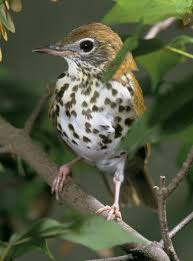Lizard Canary

Description
The Lizard Canary - one of the oldest breeds - is believed to have arisen as a mutation from canaries in France during the early 1700s.
These lizard-like canaries almost became extinct in the early 1900s due to the ravages of two world wars and disease epidemics. By the mid 1940s, only about 40 of these canaries existed in Europe.
To save this canary species, the Lizard Canary Association of Great Britain initiated a closely monitored breeding program. Nowadays, it is now one of the most popular "Type Canaries". Type canaries are bred for physical trait or shape rather than color or song. The Lizard Canary is bred specifically for the "spangled effect" of its feathers.
The Lizard Canary averages about 5.5 inches (14 cm) in length (including its tail).
This canary is named for its beautiful markings - the black crescent-shaped spots running down its back and breast, which resemble the scales of a lizard. This visual effect is known as "spangling". The Lizard Canaries gradually lose this lizard-like pattern with each annual molt.
The Lizard Canary occurs in 4 colors:
- Gold Lizard (ground color of yellow)
- Silver Lizard (warm buff)
- Blue Lizard (white foundation)
- Red Lizard (red foundation)
Lizard canaries have a single circular pattern of feathers on top of the head, which ideally should be oval with clear edges, but some are irregular shaped circles.
The caps are typically identified as:
- Clear cap
- Broken cap
- Non-cap - The non cap lizards canaries should have a scale pattern from the beak to the spangle.
For exhibition purposes, the legs and the beak should be as dark as possible. This is sometimes achieved by color-feeding them.
The lizard canary is allowed to be color fed to enhance their red plumage (please see below photograph for color feeding instructions), as are the Yorkshire and Stafford types. Hens generally carry more breast markings than cocks and cocks color up darker than females.
Scientific Name
Serinus Canaria
Country Of Origin
France
Size
Life Expectancy
Noise Level
Quiet
Talk / Trick Ability
Canaries are typically kept for their singing ability as well as their antics
Characteristics
The lizard canary, one of the oldest canary breeds, was first developed in the 1700s. This type of canary is named for its beautiful markings: black crescent-shaped spots running down its back and breast that resemble the scales of a lizard. The lizard canary almost became extinct in the early 1900s due to the ravages of both World Wars and disease epidemics. The lizard canary Association of Great Britain started a breeding program to save the species. The lizard canary occurs in four colors: gold lizard, silver lizard, blue lizard and red lizard.
Lizard canaries are popular, good-natured birds that tend to breed easily. Their characteristic scale patterning, called spangling, is the most important aspect when showing these birds. The lizard canary also has a yellow “cap” of color on its head. They are a type canary, meaning they are bred for their physical appearance rather than their color or song.
Behavior / Health Concerns
The lizard canary does well in either cages or aviaries. They are on the timid side and should not be housed together with parakeets, lovebirds or other hookbills that tend to be more aggressive. They like to bathe daily and should be given water to do so. Their environment should not be wet, cool or drafty, and if they are given space to sunbathe, they should also have a shaded area. Keep perches clean to avoid any foot problems.
Expert Advice
“The lizard canary is believed to have been selectively bred by the French, then later introduced into London. The non-frosted version is called gold while the frosted version is called silver. They can be clear capped, broken capped or have no cap at all, but overly capped or variegation is considered a fault when showing.”
— Mandy Currie, Singing Wings Aviary